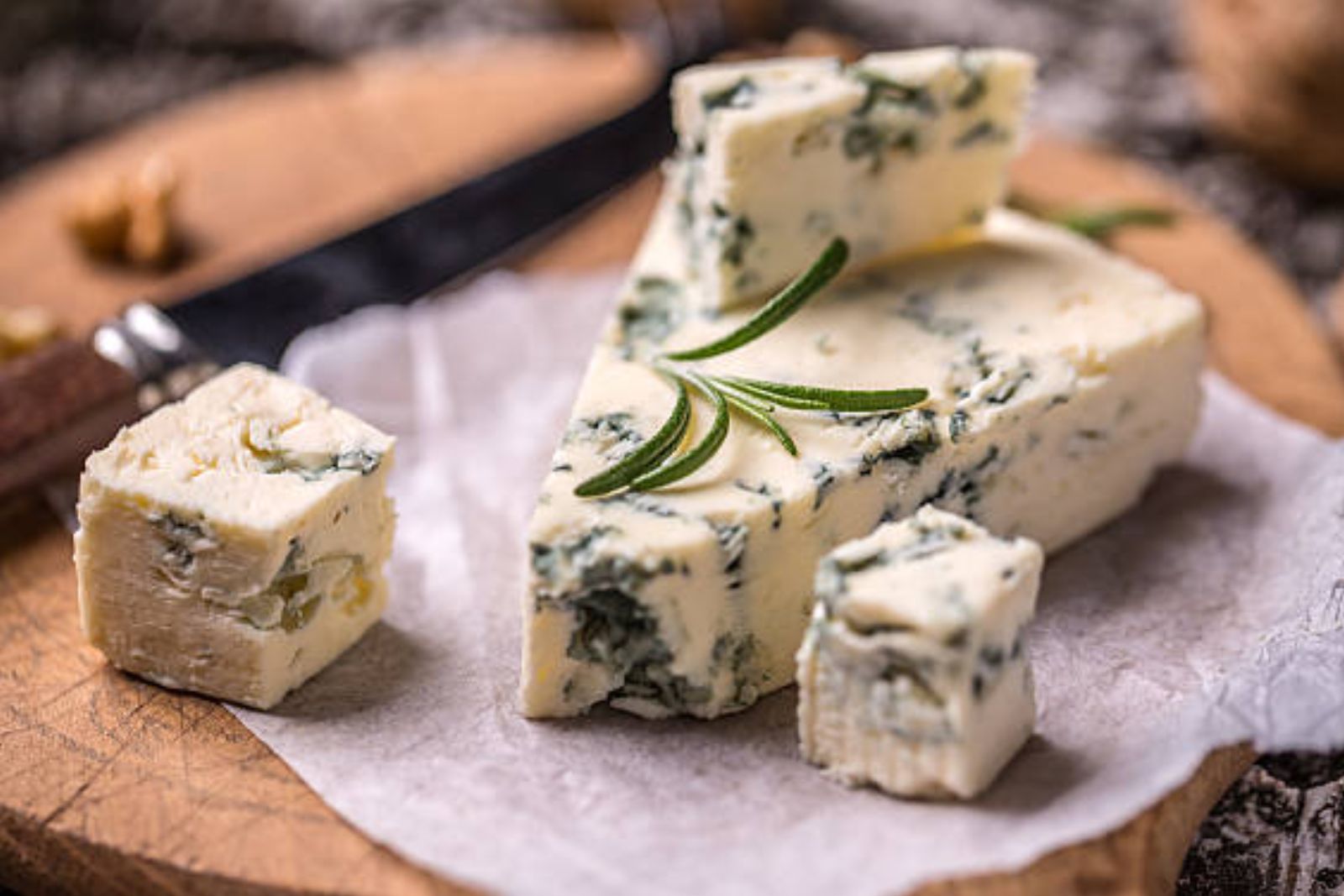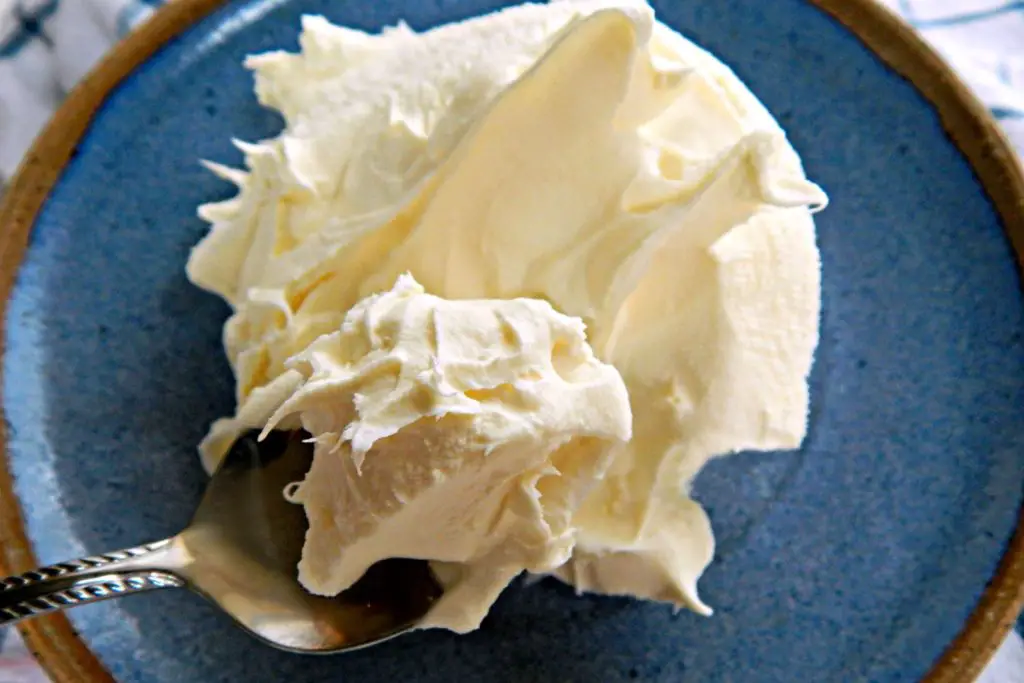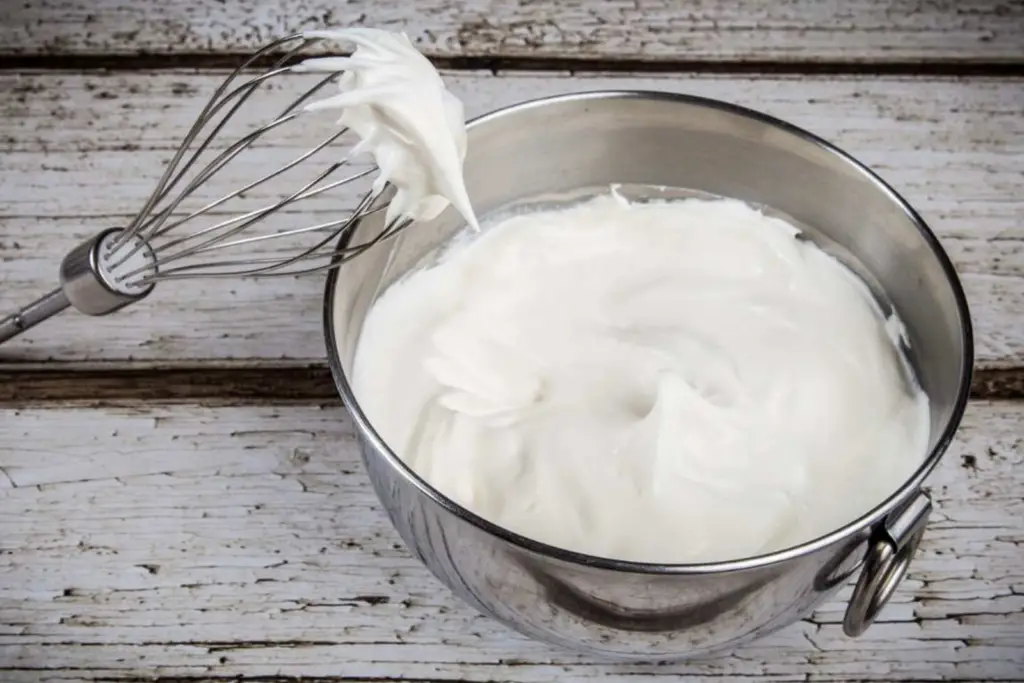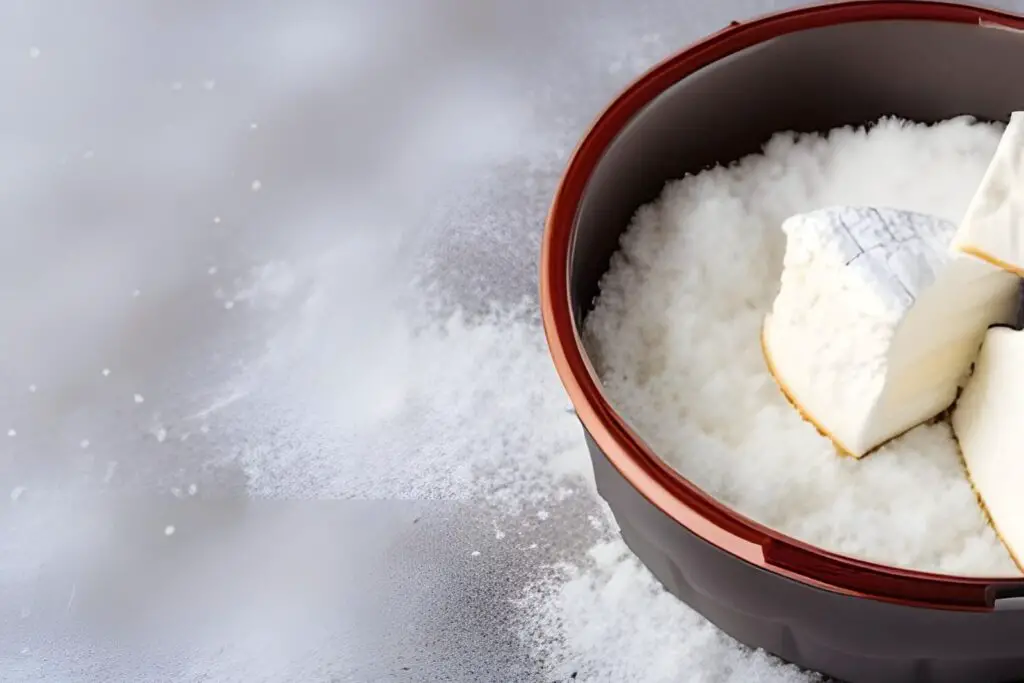
Stilton cheese is a renowned British cheese known for its rich and robust flavor. It is a type of blue cheese, characterized by its blue-green veins and crumbly texture. Stilton cheese is often savored on its own or used as an ingredient in various dishes, imparting a distinctive taste to salads, soups, and sauces. To extend the shelf life of this delectable cheese and preserve its delightful taste, freezing is an excellent option. By following these simple steps, you can freeze Stilton cheese effectively while ensuring its quality remains intact.
Here’s a comprehensive guide on freezing Stilton cheese:
Step 1: Choose fresh and quality Stilton cheese
Choosing fresh and high-quality Stilton cheese is crucial when it comes to freezing it effectively. Here’s why:
- Taste and Flavor: High-quality Stilton cheese has a rich and distinct flavor profile, with its characteristic tangy and nutty notes complemented by the unique blue veining. Freezing helps preserve the cheese, but it won’t improve the flavor. Therefore, starting with a cheese that’s already at its peak of flavor ensures that the frozen version retains the delicious taste once thawed.
- Texture: Stilton cheese is known for its crumbly and slightly creamy texture. Lower-quality cheeses or those that have been sitting around for too long may have compromised textures, becoming overly crumbly or dry. Choosing fresh Stilton ensures that the cheese’s texture is at its best, even after freezing and thawing.
- Freezer Performance: High-quality Stilton cheese contains fewer impurities and has a well-balanced moisture content, making it more amenable to freezing. Cheeses with excessive moisture or impurities might suffer from ice crystals forming during freezing, affecting their texture and taste.
- Shelf Life: Freezing can extend the shelf life of Stilton cheese, but it’s essential to start with a cheese that still has some time before its expiration date. Freezing won’t reverse the aging process, so selecting a cheese that’s not close to expiring ensures you have ample time to use it once thawed.
- Nutritional Value: Fresh and high-quality Stilton cheese retains its nutritional value, including essential vitamins and minerals. Freezing preserves these nutrients, making it a viable option for long-term storage without sacrificing nutritional benefits.
Step 2: Portion and wrap the cheese
Portioning and wrapping the Stilton cheese appropriately is essential to ensure its quality and usability while frozen. Here’s why this step is crucial:
- Easy Usage: By portioning the Stilton cheese into manageable sizes, you can conveniently use only the amount you need without having to thaw the entire block. This is particularly beneficial if you plan to use the cheese in various dishes or recipes that require different quantities.
- Prevents Waste: Stilton cheese is a delicacy and can be relatively expensive. By dividing the cheese into smaller portions, you can avoid wastage. Thawing only what you need reduces the risk of excess cheese going bad or being discarded.
- Preserves Quality: The way you wrap the cheese plays a vital role in maintaining its quality during freezing. Tightly wrapping each portion with plastic wrap or aluminum foil creates an airtight barrier, preventing air from reaching the cheese. Air exposure can lead to freezer burn, which negatively impacts the cheese’s taste and texture.
- Avoids Odor Contamination: Strong-smelling foods can easily transfer their odors to other items in the freezer. By wrapping the Stilton cheese securely, you can prevent it from absorbing odors from other foods, preserving its original and distinct flavor.
- Protects against Moisture Loss: Proper wrapping helps prevent moisture loss from the cheese during freezing. Stilton cheese contains some moisture, which contributes to its creamy texture. Preventing excessive moisture loss ensures that the cheese remains moist and enjoyable once thawed.
- Easy Organization: Clearly wrapped and portioned Stilton cheese is easier to organize in the freezer. Neatly stacked and labeled packages allow you to quickly find the amount you need without having to rummage through the freezer.
- Reduces Thawing Time: Smaller portions of Stilton cheese thaw more quickly than a large block. This means you can have ready-to-use cheese in less time when preparing your meals.
Can I freeze Stilton cheese with its original packaging?
It’s not recommended to freeze Stilton cheese in its original packaging, as it may not provide sufficient protection against freezer burn. It’s best to portion the cheese, wrap it tightly in plastic wrap or aluminum foil, and then double wrap it in plastic freezer bags for optimal freezing.
Can I freeze a whole wheel of Stilton cheese?
Freezing a whole wheel of Stilton cheese is possible, but it’s more practical to portion it into smaller pieces for easier storage and usage. Divide the wheel into manageable portions, and follow the proper wrapping and freezing procedures.
Step 3: Double wrap for added protection
Double wrapping the portioned Stilton cheese with plastic freezer bags offers an additional layer of protection during freezing, serving several important purposes:
- Odor Containment: Freezers can be home to a variety of strong-smelling foods, and these odors can easily permeate other items, including the Stilton cheese. By double wrapping the cheese with plastic freezer bags, you create an extra barrier that helps prevent the absorption of unwanted odors. This ensures that the Stilton cheese retains its unique and distinct taste, free from any undesirable flavors.
- Enhanced Airtight Seal: Plastic freezer bags provide a more secure and airtight seal compared to regular plastic wrap or aluminum foil alone. Pressing out as much air as possible from the bags before sealing further reduces the chances of freezer burn and maintains the cheese’s texture and flavor.
- Moisture Protection: Stilton cheese contains some moisture, and preventing excessive moisture loss during freezing is crucial to preserving its creamy texture. The double wrapping of plastic freezer bags helps retain the cheese’s moisture content, keeping it from drying out while in the freezer.
- Added Durability: Plastic freezer bags are generally thicker and more durable than regular plastic wrap, offering better protection against potential punctures or tears. This added layer of strength reduces the risk of the cheese being exposed to the cold air in the freezer, safeguarding its overall quality.
- Easy Identification: Double wrapping the Stilton cheese in plastic freezer bags makes it easier to identify the cheese in the freezer, especially if the bags are transparent or have labels. This can help you locate and access the cheese quickly without having to unwrap and inspect each individual portion.
- Space Optimization: The flattened shape of freezer bags can save space in the freezer compared to bulky wrapped blocks of cheese. This allows for better organization and efficient use of the available freezer space.
Step 4: Label the packages
Labeling the packages of frozen Stilton cheese is a crucial step in the freezing process, offering several important benefits:
- Tracking Freezing Time: By labeling each portion with the current date, you can keep track of how long the Stilton cheese has been in the freezer. This is essential for knowing its overall storage duration and helps you determine whether the cheese is still within its optimal quality period.
- Preventing Food Waste: Stilton cheese, like any perishable food item, has a limited shelf life even when frozen. By labeling the packages, you can easily identify the oldest portions. This ensures that you use the oldest Stilton cheese first, reducing the risk of any portions going unused for an extended period and potentially going to waste.
- Ensuring Optimal Quality: While Stilton cheese can be frozen and remain safe to eat for an extended period, its taste and texture may gradually deteriorate over time. By keeping track of the freezing date, you can consume the cheese within a reasonable timeframe, ensuring it retains its desired flavor and texture.
- Rotation Management: Labeling the packages also helps implement a proper rotation system in your freezer. When adding new portions of Stilton cheese, you can place them at the back and use the older ones first. This prevents the cheese from getting lost in the depths of the freezer and ensures efficient utilization of your frozen stock.
- Easy Identification: A clear label with the freezing date makes it easy to identify the content of each package without having to unwrap or thaw them. This is particularly useful if you have various types of cheeses or frozen items in the freezer.
- Meal Planning: Knowing the freezing date allows you to plan your meals effectively. You can incorporate the frozen Stilton cheese into your meal planning, ensuring you have the right amount of cheese for specific recipes or occasions.
- Safety Precautions: Properly labeled packages also help ensure food safety. If you ever need to defrost the cheese for any reason, you’ll know exactly how long it has been frozen, helping you adhere to recommended food safety guidelines.
Step 5: Arrange in the freezer
Arranging the wrapped and labeled Stilton cheese portions in the freezer in a specific manner is essential to ensure proper freezing and maintain the cheese’s quality. Here’s why this step is crucial:
- Uniform Freezing: Placing the portions in a single layer on a flat surface ensures that each package of Stilton cheese has optimal exposure to the cold air in the freezer. This promotes uniform freezing, where the cheese freezes at the same rate throughout its entirety. Uniform freezing helps maintain the cheese’s texture and taste, preventing any potential inconsistencies in quality.
- Faster Freezing: By avoiding overcrowding and allowing space between the packages, the freezer can efficiently circulate cold air around each portion of cheese. This accelerates the freezing process, reducing the time it takes for the Stilton cheese to freeze completely. Rapid freezing is beneficial in preserving the cheese’s flavor and texture.
- Minimizes Stickiness: Stilton cheese, like other varieties, can become sticky when exposed to excessive moisture or warm temperatures during freezing. By arranging the portions with adequate space, you prevent them from sticking together, making it easier to retrieve individual packages when needed without thawing the entire batch.
- Prevents Package Damage: When portions are crowded together, there is a higher risk of package damage due to rubbing or compression. This can compromise the airtight seals and lead to potential freezer burn or contamination. Keeping ample space between the wrapped portions reduces the likelihood of package damage, ensuring the cheese remains protected during freezing.
- Efficient Storage: Placing the Stilton cheese portions in a single layer on a flat surface optimizes the use of freezer space. It allows you to utilize the available space more effectively and easily organize the packages, making it convenient to locate and access specific portions without having to rearrange other items in the freezer.
- Easy Retrieval: A well-organized arrangement of Stilton cheese portions makes it effortless to find the desired package when you need it. This is particularly helpful when you are in a hurry or preparing multiple dishes, as you can quickly retrieve the exact amount of cheese required.
Step 6: Store at the right temperature
Storing the frozen Stilton cheese at the right temperature is critical to preserving its quality and ensuring it remains safe for consumption. Here’s why setting the freezer temperature to 0°F (-18°C) or lower is essential:
- Prevents Thawing and Refreezing: Keeping the freezer at or below 0°F (-18°C) ensures that the temperature remains consistently low enough to prevent the Stilton cheese from thawing. Thawing and refreezing can cause the formation of ice crystals within the cheese, leading to changes in its texture and taste. These temperature fluctuations can also encourage bacterial growth, potentially compromising the safety of the cheese.
- Maintains Texture: Freezing the Stilton cheese at the correct temperature helps preserve its texture and prevents it from becoming mushy or crumbly. When the cheese is exposed to fluctuating temperatures, ice crystals can form and disrupt the cheese’s delicate structure, resulting in a loss of its desirable texture.
- Retains Flavor: Storing the cheese at a consistent and sufficiently low temperature helps maintain its distinct flavor. The flavor compounds in Stilton cheese can be sensitive to temperature changes, and storing it at a stable freezing temperature prevents any loss or alteration of its unique taste.
- Prevents Freezer Burn: Freezer burn occurs when moisture within the cheese evaporates, leaving it dehydrated and altering its taste. By keeping the freezer temperature at or below 0°F (-18°C), you minimize the risk of freezer burn, ensuring that the Stilton cheese remains in optimal condition.
- Extends Shelf Life: Maintaining the correct freezer temperature maximizes the shelf life of the frozen Stilton cheese. At 0°F (-18°C) or lower, the cheese can remain safe to eat for an extended period without compromising its quality. This allows you to enjoy the cheese at your convenience, knowing it will be just as delightful as when you first froze it.
- Food Safety: Setting the freezer to the recommended temperature ensures that the Stilton cheese remains safe to eat. Bacteria growth is inhibited at lower temperatures, reducing the risk of foodborne illnesses and ensuring the cheese stays safe for consumption throughout its frozen storage period.
How long can I store frozen Stilton cheese?
When stored at 0°F (-18°C) or lower, frozen Stilton cheese can retain its quality for up to 3-6 months. However, for the best taste and texture, it’s advisable to consume the cheese within 1-2 months of freezing.
Step 7: Thaw and use
Thawing the frozen Stilton cheese properly is crucial to maintaining its taste, texture, and overall quality. Here’s why the slow thawing process in the refrigerator is recommended:
- Preserves Flavor and Texture: Thawing the Stilton cheese slowly in the refrigerator allows it to defrost gradually and evenly. This gentle thawing process preserves the cheese’s delicate flavor and prevents any significant changes in its texture. Rapid thawing at room temperature or using heat can lead to moisture loss and alter the cheese’s taste and consistency.
- Minimizes Moisture Loss: Thawing the cheese in the refrigerator helps retain its moisture content, which is essential for maintaining its creamy texture. Slow thawing prevents excessive moisture loss that can occur with quick thawing methods, such as microwave defrosting.
- Reduces the Risk of Spoilage: Thawing the frozen Stilton cheese at a controlled and cold temperature in the refrigerator minimizes the risk of bacterial growth. Compared to room temperature thawing, which creates a more favorable environment for bacterial proliferation, slow refrigerator thawing ensures the cheese remains safe for consumption.
- Avoids Freezer Burn Rehydration: Rapid thawing methods can cause ice crystals to melt and then rehydrate the cheese during the thawing process. This rehydration can result in a loss of flavor and negatively impact the cheese’s texture. Slow thawing in the refrigerator minimizes the risk of freezer burn rehydration and helps preserve the cheese’s original characteristics.
- Maintains Structural Integrity: Stilton cheese, like other aged cheeses, has a delicate structure. Rapid thawing can lead to changes in the cheese’s physical structure, affecting its crumbly and creamy consistency. Thawing in the refrigerator at a gradual pace helps maintain the cheese’s structural integrity.
- Prevents Sudden Temperature Changes: Avoiding thawing the Stilton cheese at room temperature prevents sudden temperature fluctuations. Rapid temperature changes can stress the cheese and cause it to release excess moisture, potentially leading to a less desirable texture and flavor.
- Promotes Food Safety: Slow thawing in the refrigerator ensures that the Stilton cheese remains within a safe temperature range throughout the thawing process. This reduces the risk of foodborne illnesses associated with improper thawing and handling of perishable foods.
Other related questions
Can I refreeze Stilton cheese?
Yes, you can refreeze Stilton cheese, but it may affect its taste and texture. Each time you refreeze, the cheese may undergo additional moisture loss and changes in flavor, potentially diminishing its quality. It is best to avoid repeated freezing and thawing to preserve the optimal taste and texture of Stilton cheese.
How do I know if the Stilton cheese has gone bad after being frozen?
To determine if frozen Stilton cheese has gone bad, check for signs of spoilage, such as an off-smell, mold growth, or a change in texture (becoming excessively dry or crumbly). If the cheese exhibits any of these indications, it is likely no longer safe to consume. Trust your senses and discard the cheese if there are any doubts about its quality or safety.
Can I use thawed Stilton cheese in recipes?
Yes, you can use thawed Stilton cheese in various recipes, just like fresh cheese. It works well in salads, sauces, pasta dishes, and as a topping for grilled meats. Thaw the cheese in the refrigerator and use it within a few days for optimal results.
Can I freeze Stilton cheese rinds for flavoring soups and stocks?
Yes, you can freeze Stilton cheese rinds to add flavor to soups, stews, and stocks. Save the rinds in a separate airtight container or plastic freezer bag and use them as needed when cooking. The rinds release a rich and savory taste that enhances the depth of your culinary creations.
Can I freeze Stilton cheese that has already been cooked?
While you can technically freeze cooked Stilton cheese, it’s best to freeze it in its uncooked form for better results. Cooked cheese may undergo changes in texture and taste during freezing and reheating.
Can I freeze Stilton cheese crumbles or grated cheese?
Yes, you can freeze Stilton cheese crumbles or grated cheese. Portion and wrap them tightly before freezing to prevent moisture loss and maintain their quality. Remember to double wrap for added protection against freezer odors.
Can I freeze Stilton cheese spread or dip?
Freezing Stilton cheese spread or dip is not recommended, as the texture and consistency may change significantly during freezing and thawing. It’s best to consume these products fresh or within their recommended shelf life.








